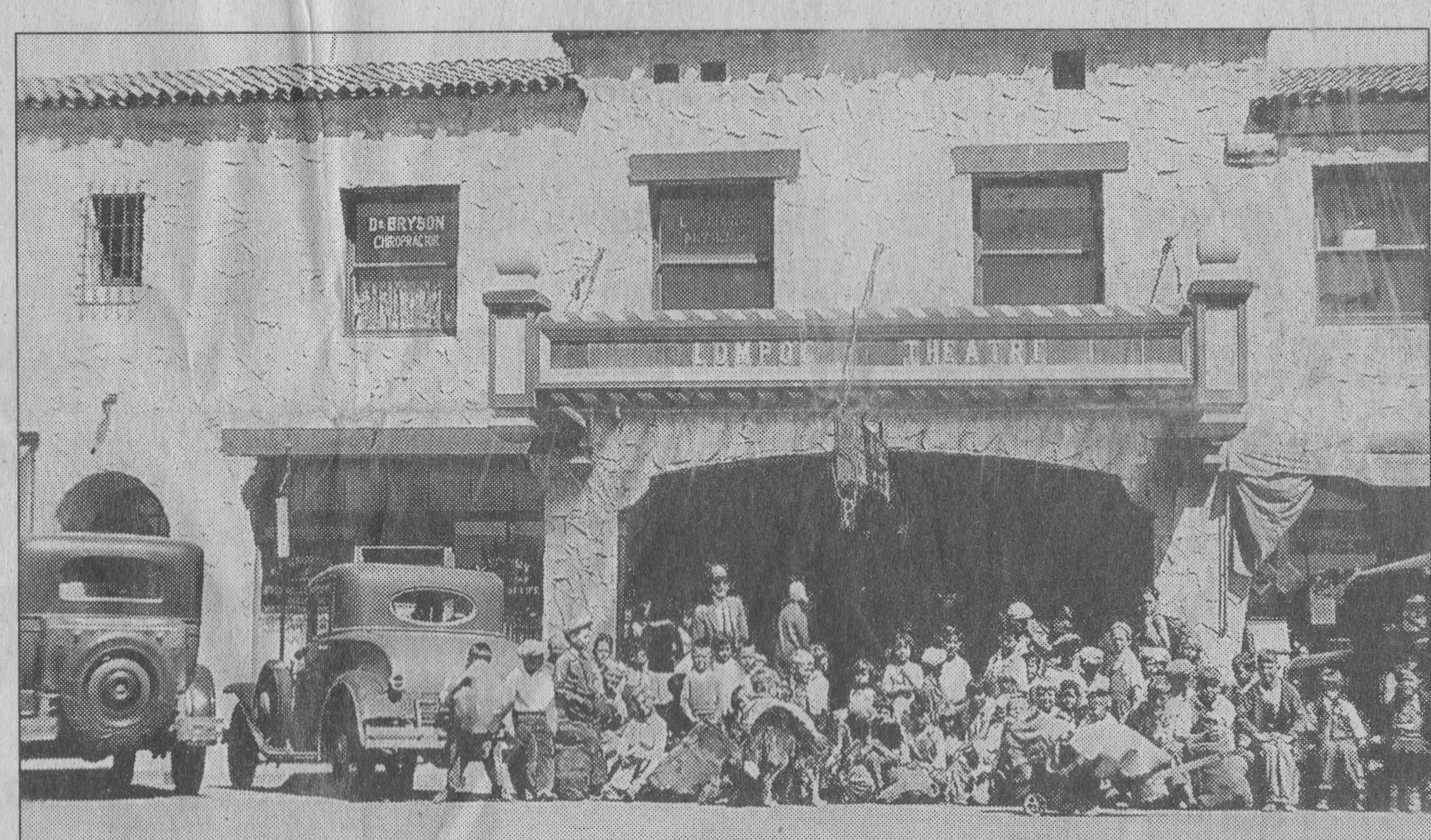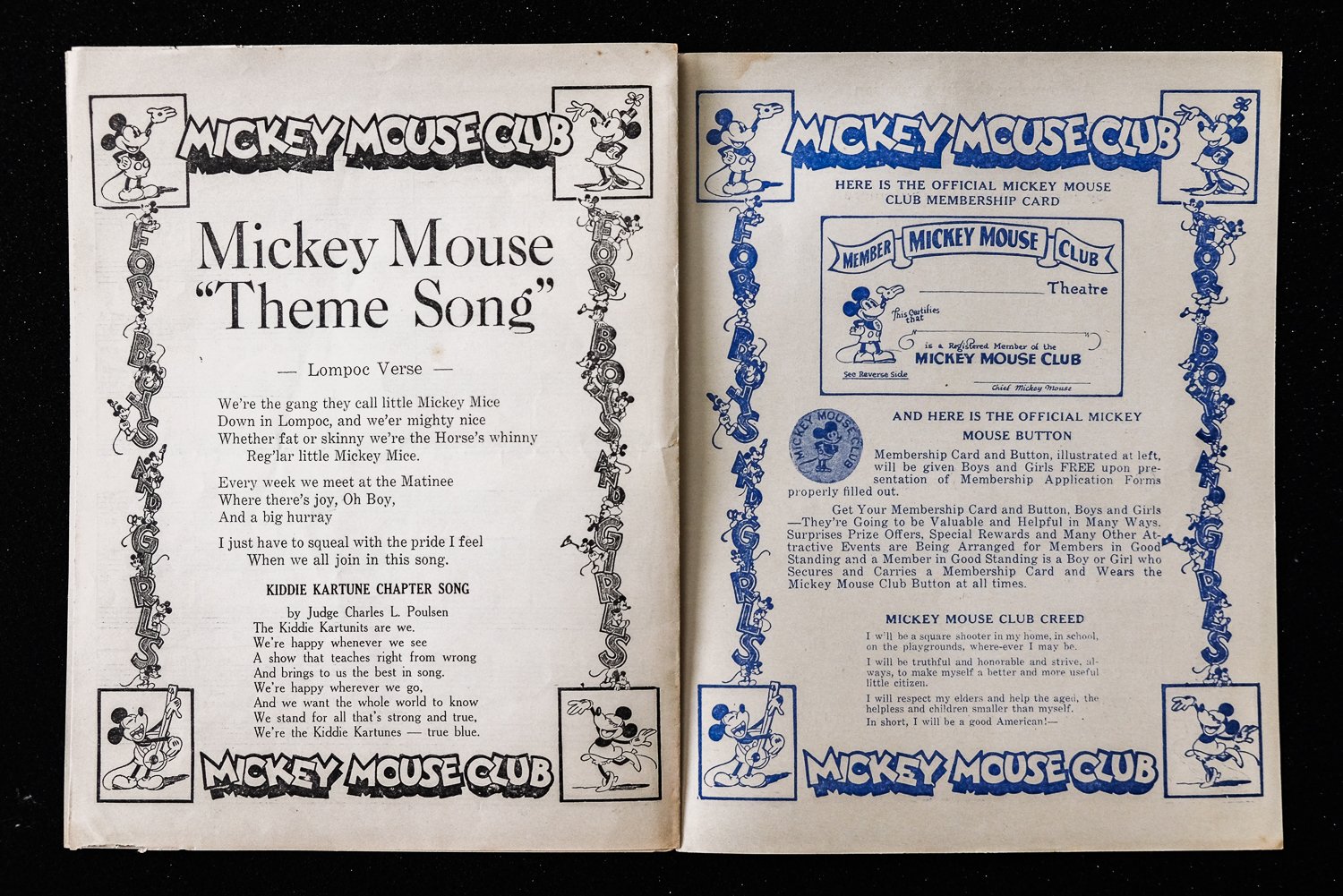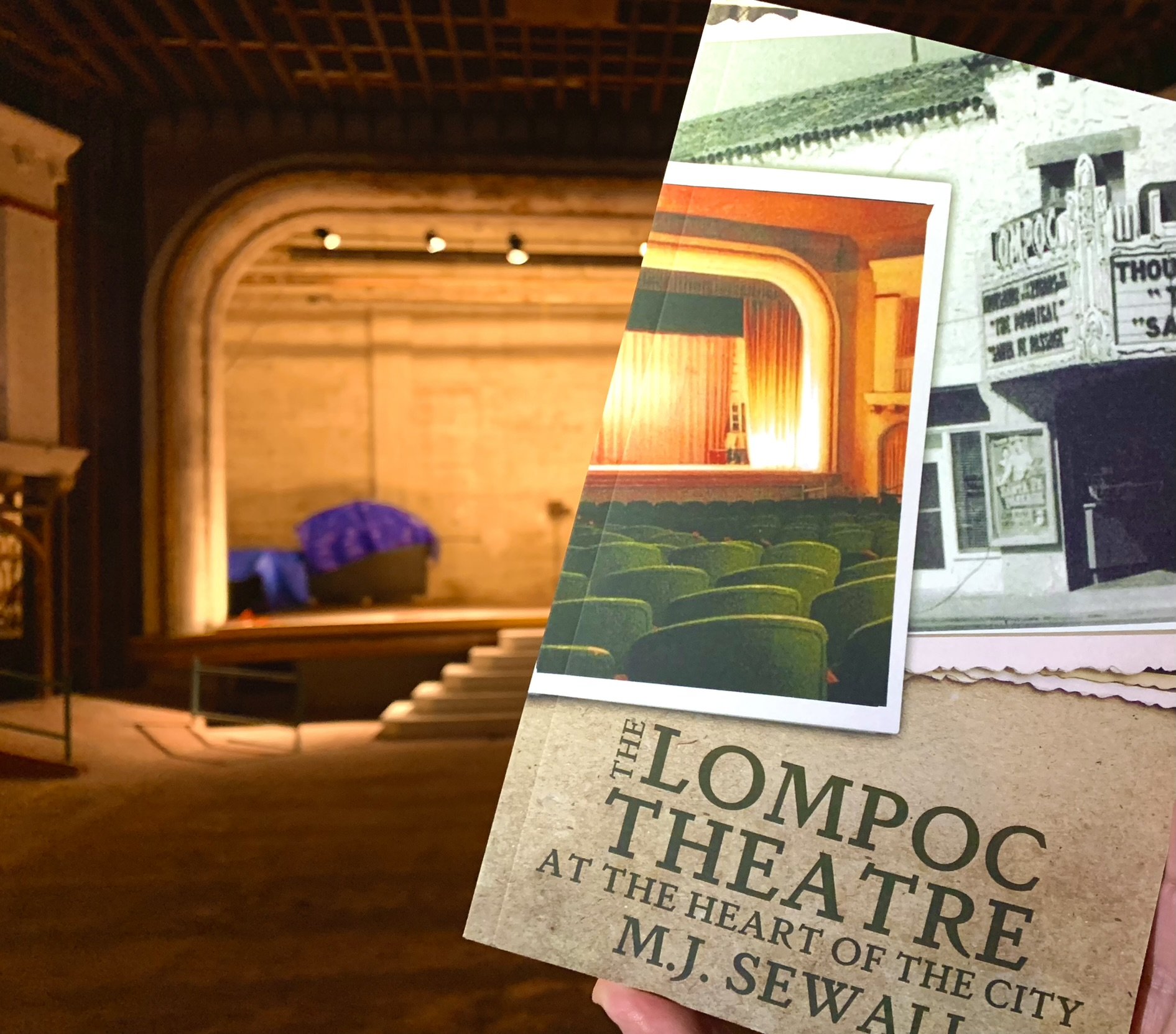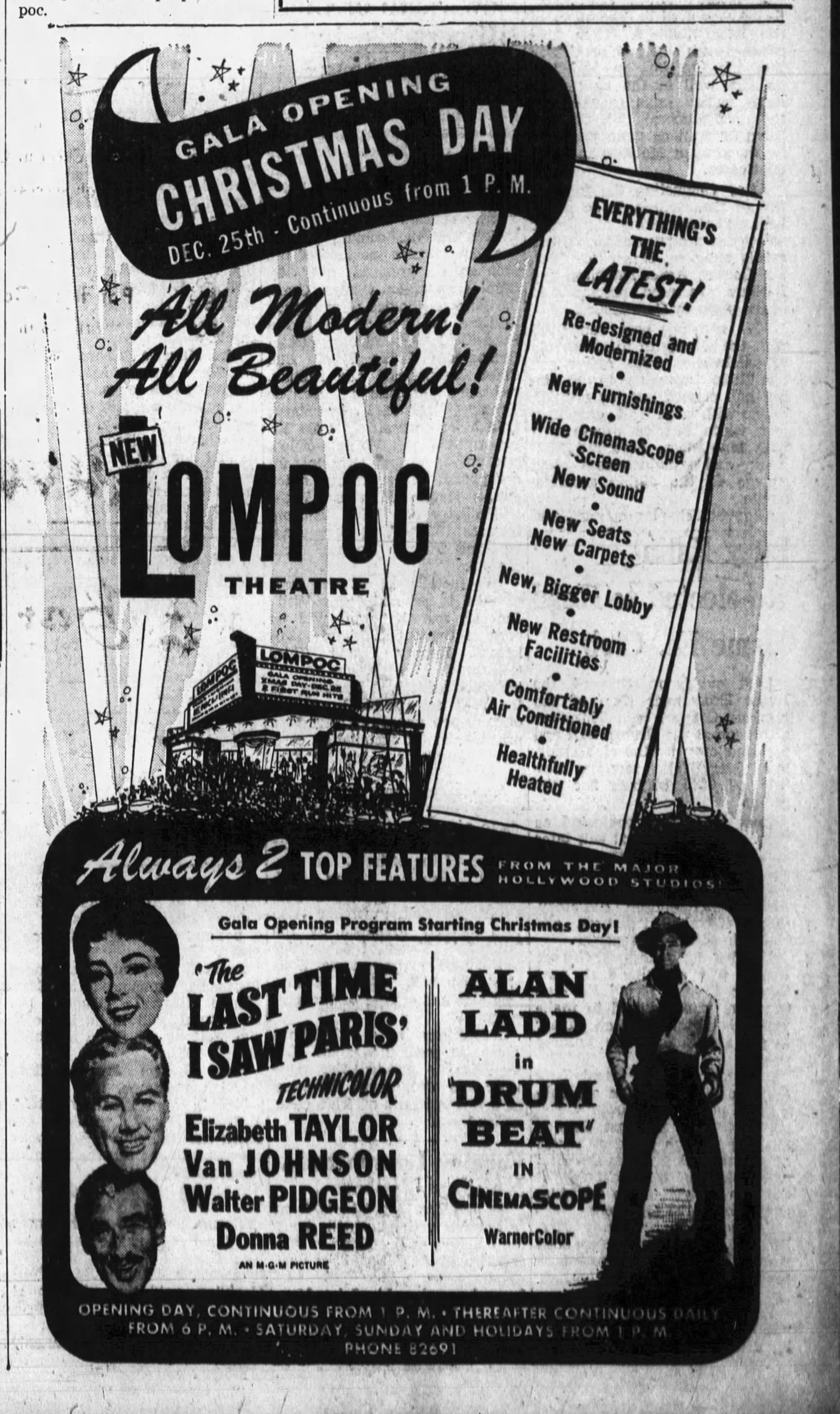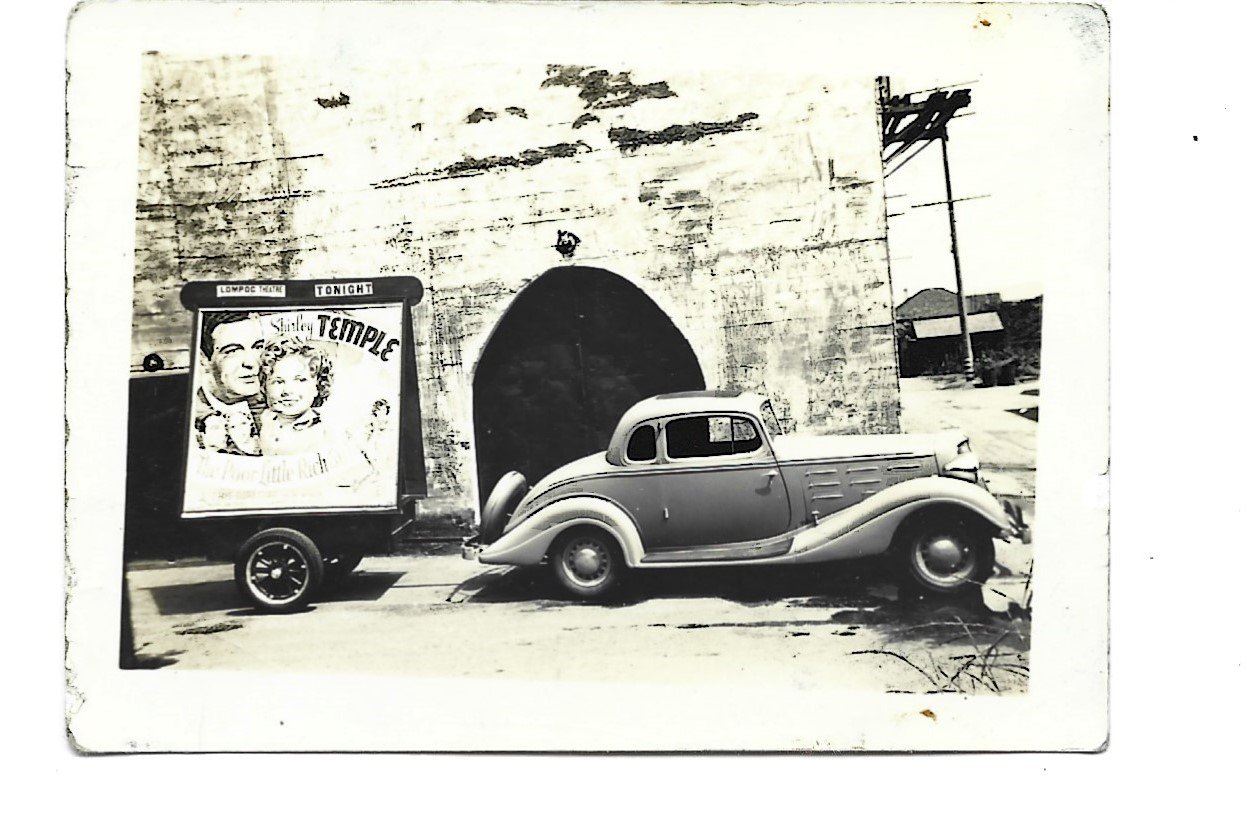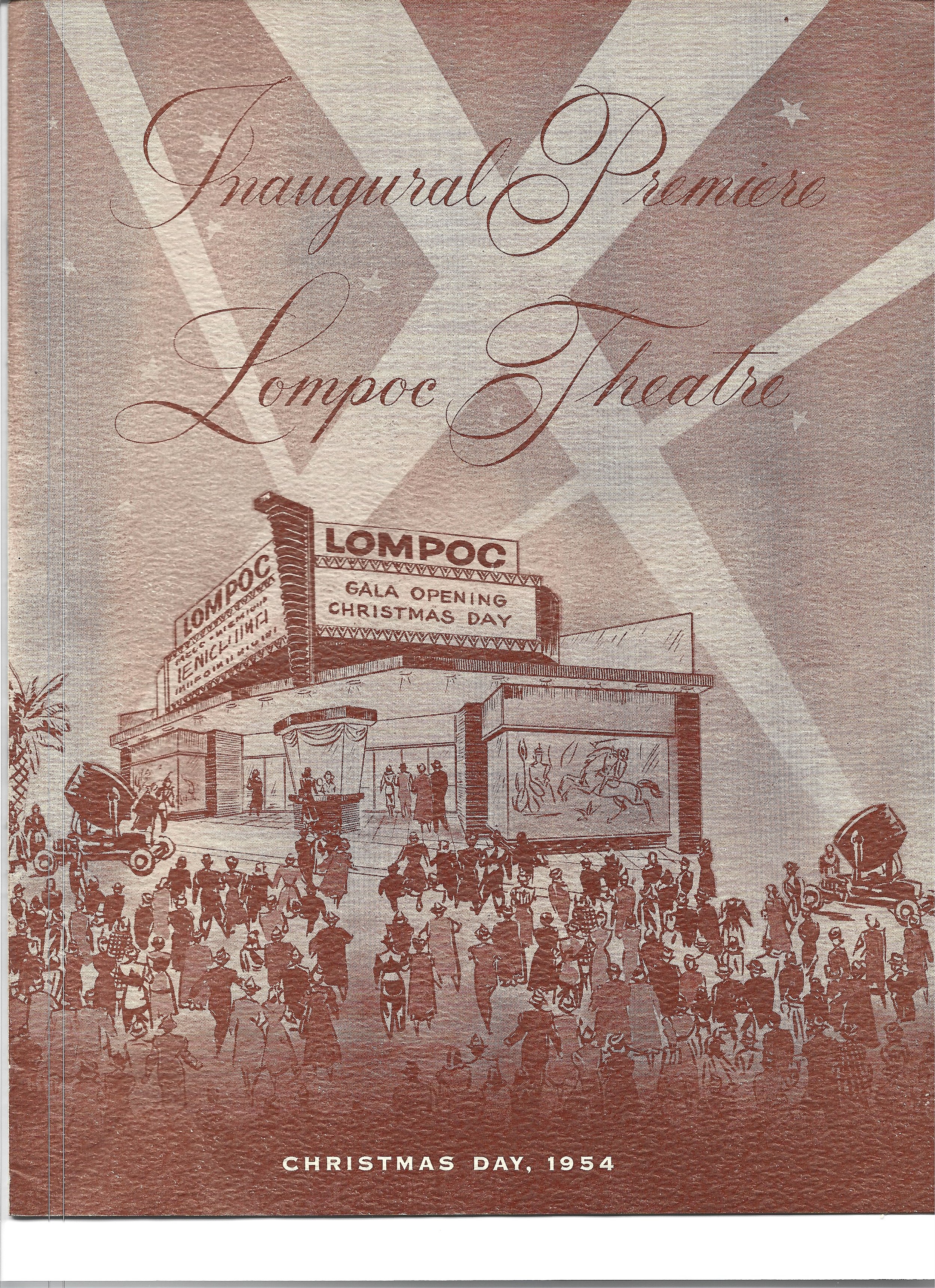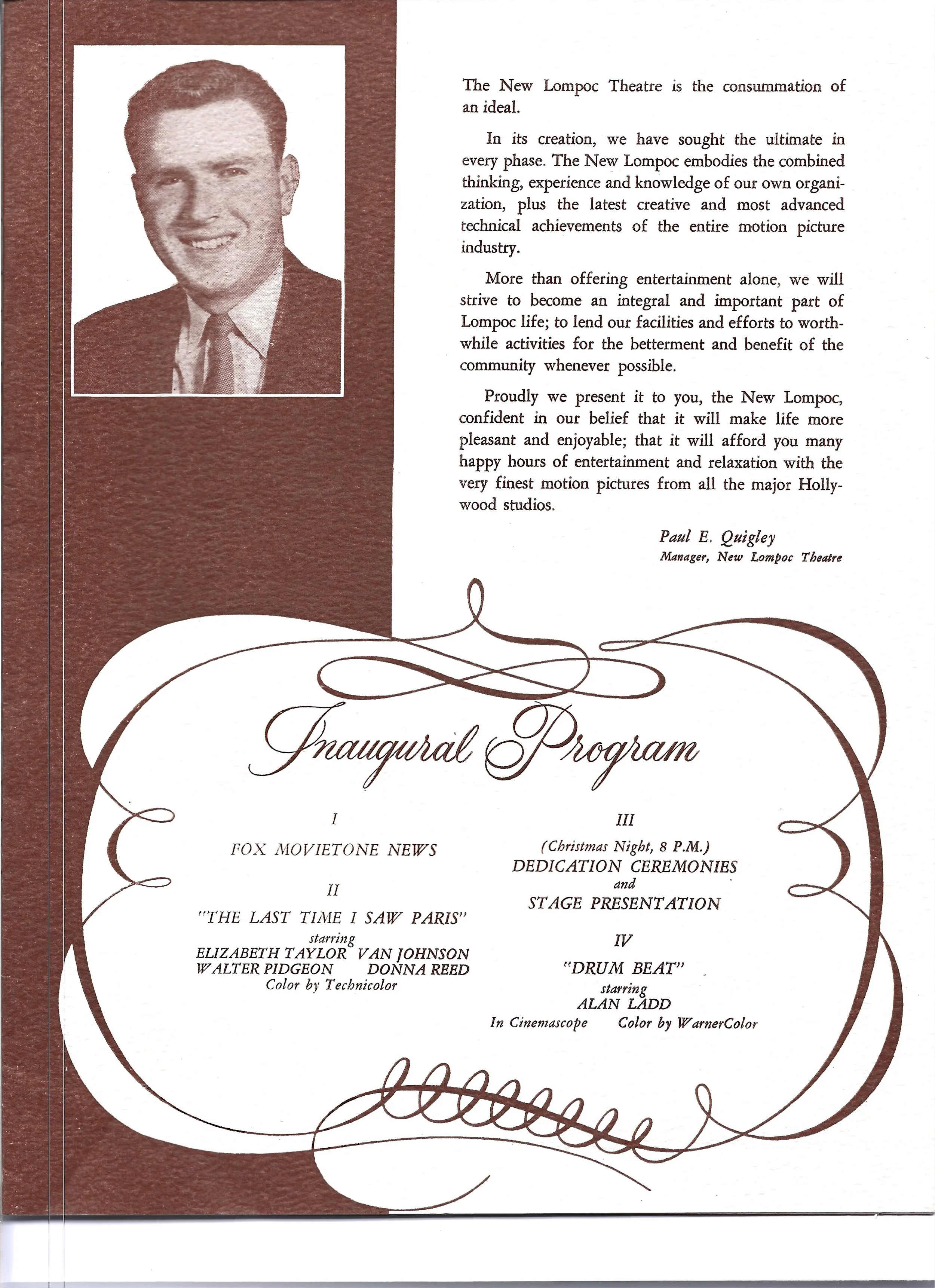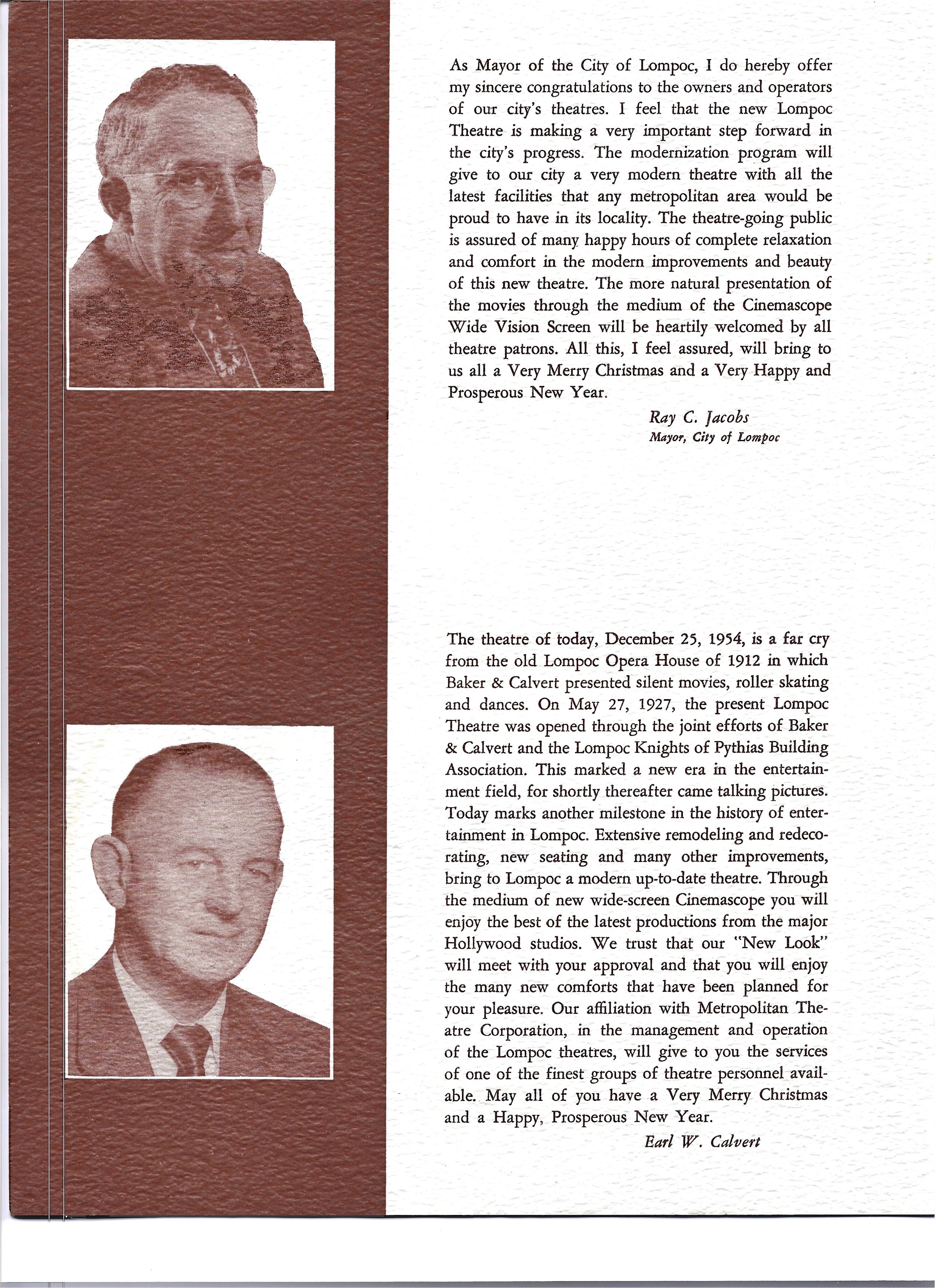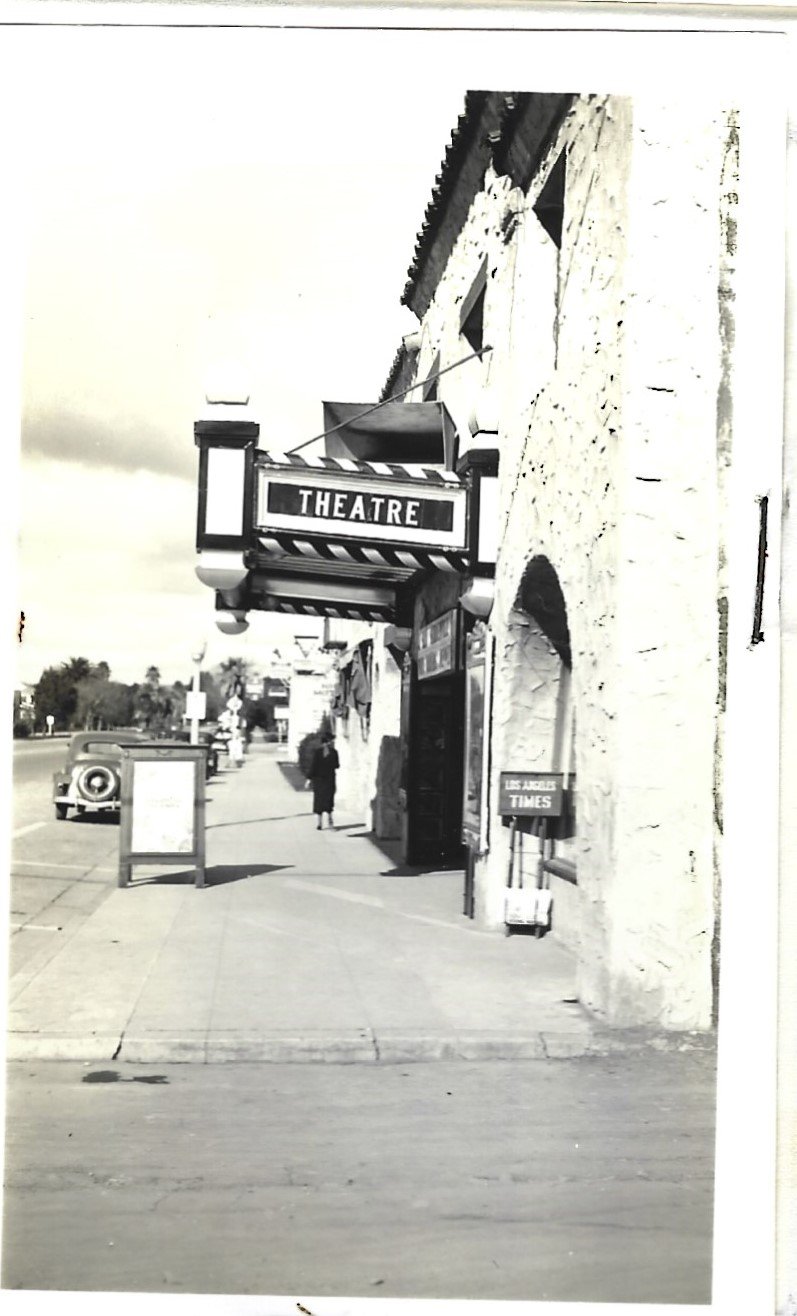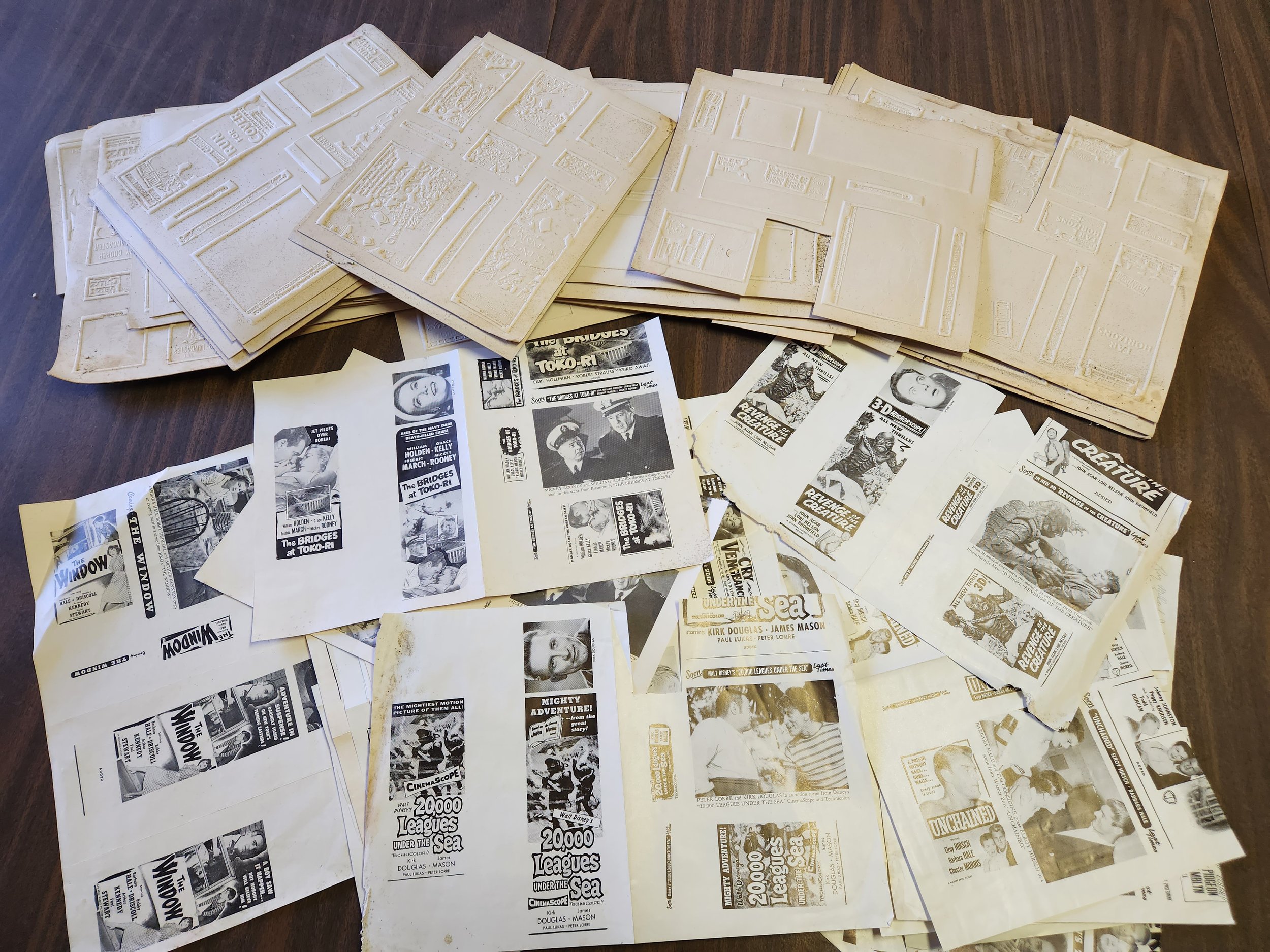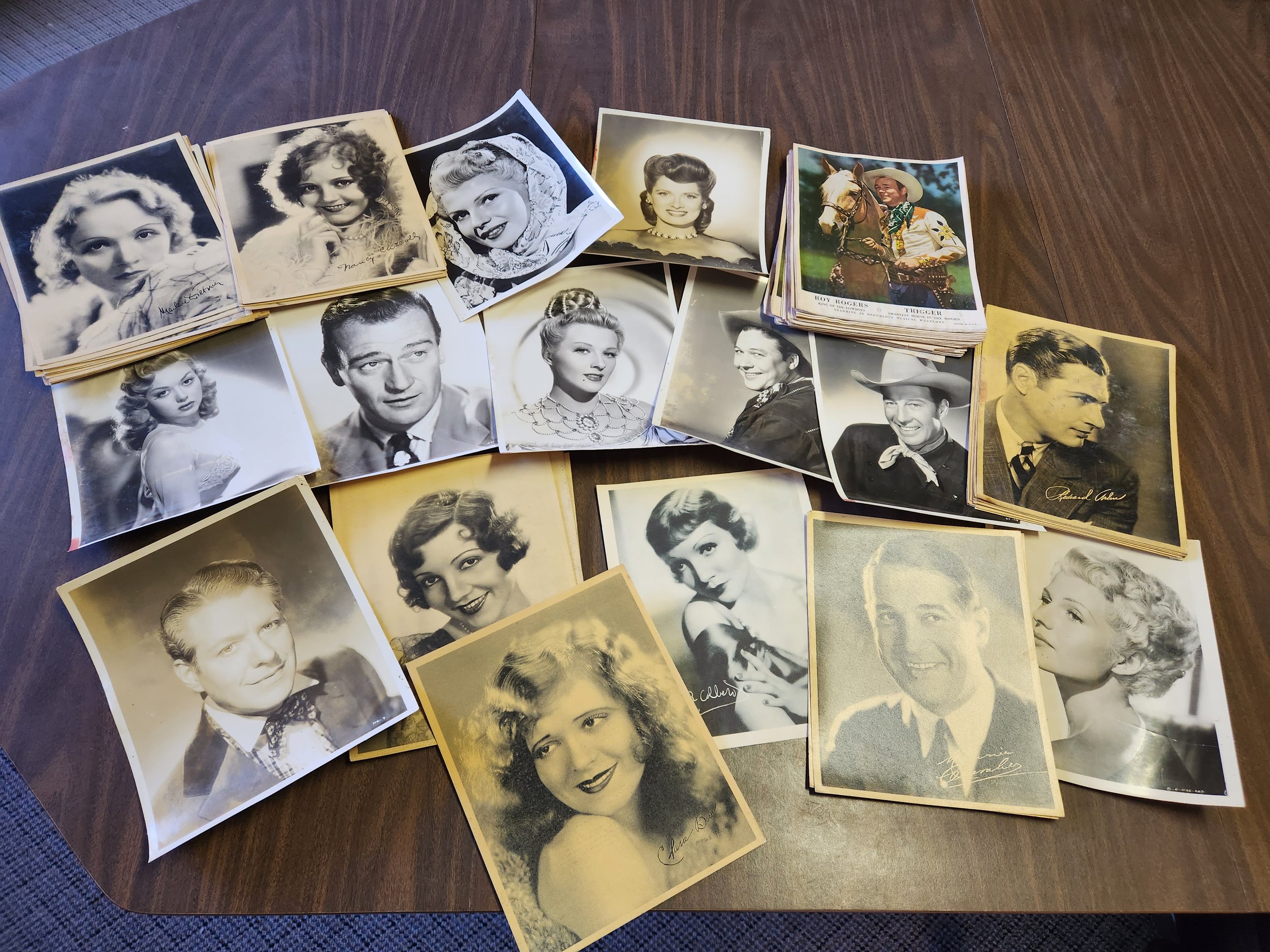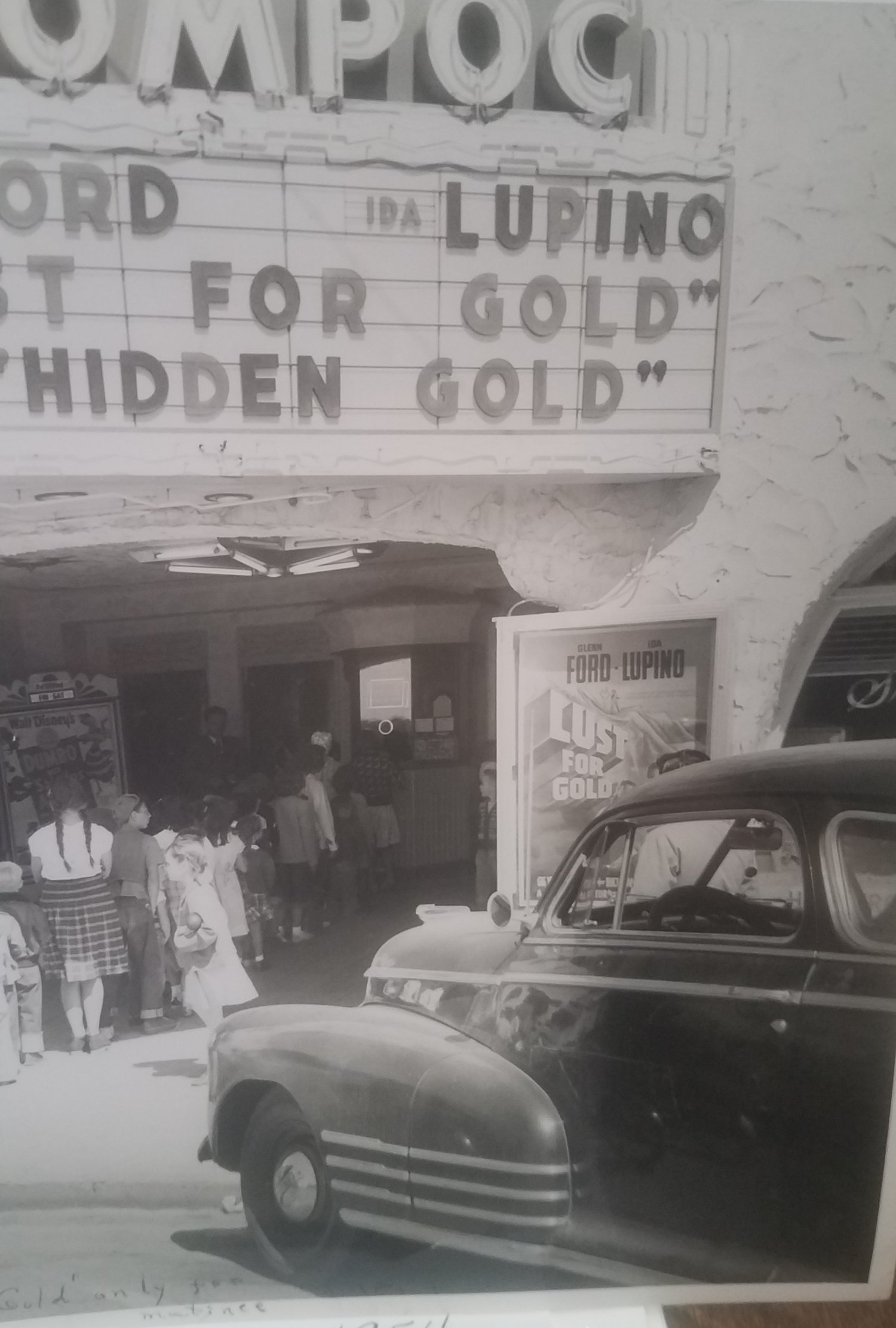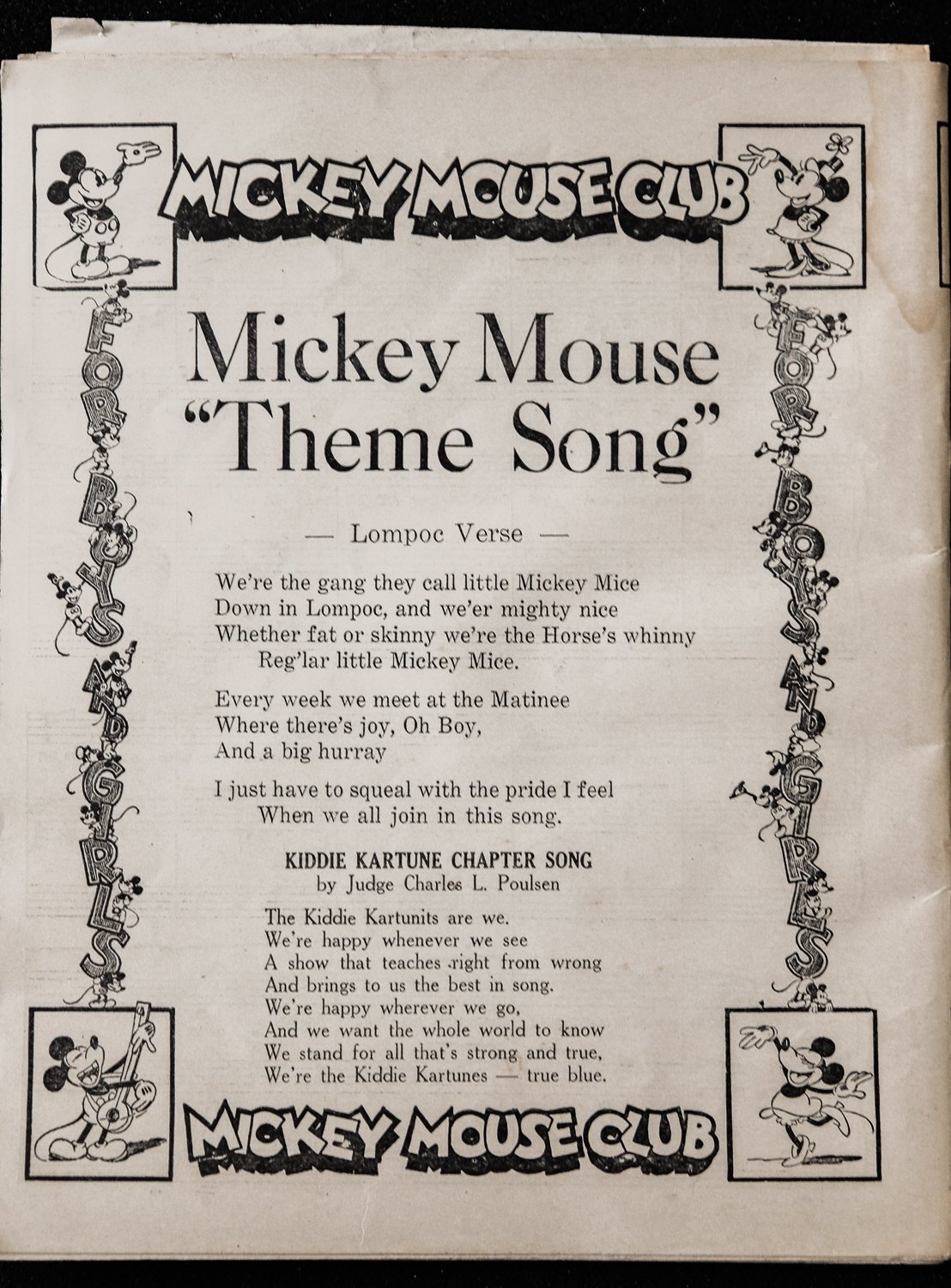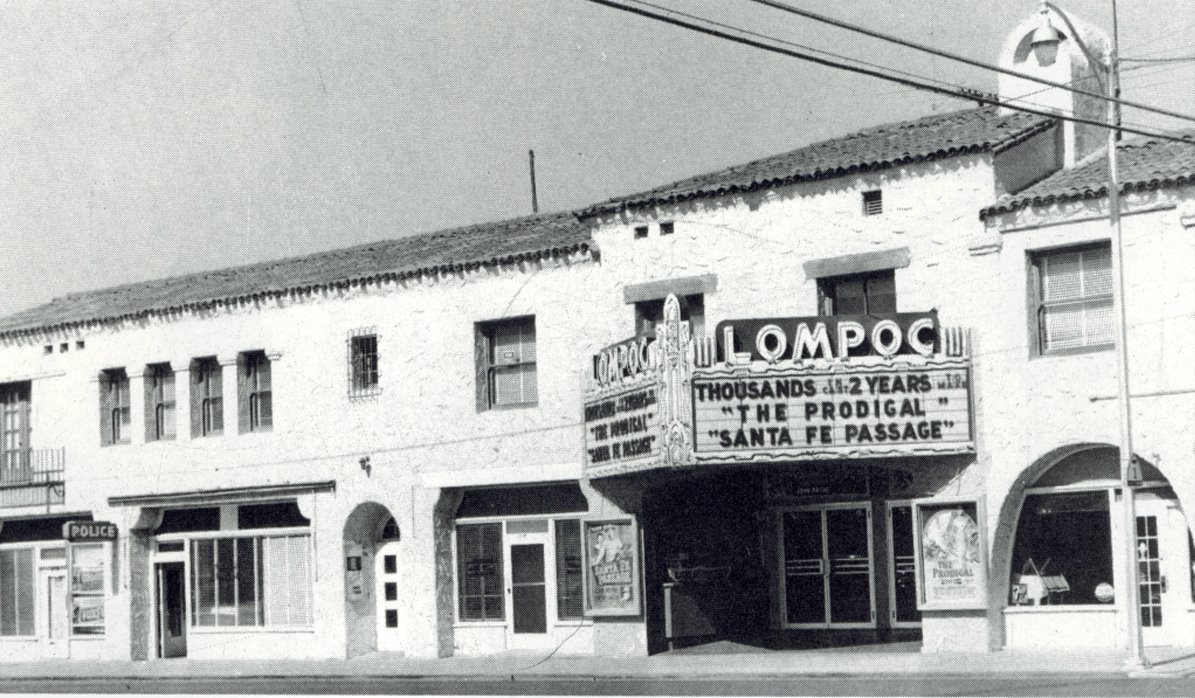History of the LOMPOC Theatre
Support our efforts to restore this treasure at the heart of Lompoc by making a donation here.
Frances Flores Goyer of Lompoc works in the ticket office of the original Lompoc Theater during the 1950s. Photo credit: Lompoc Valley Historical Society.
“To the fathers, mothers, and children of this prosperous and enterprising community… to the masses and the classes, the new Lompoc theatre is respectfully dedicated. As an integral part of this community, the new Lompoc Theatre is hereby pledged as a public institution, where daily worries, work, and cares may be obliterated through the medium of the universal language — motion pictures. People of the Lompoc valley, this theatre is YOURS.”
First Marquee - circa 1932
The Lompoc Theatre as landmark
From opening night in 1927 well into the 1970s, the theater was Lompoc’s primary venue for entertainment, culture, and civic events. During opening week, proprietor Walter Calvert sent an open letter to the local newspapers:
“To the fathers, mothers, and children of this prosperous and enterprising community… to the masses and the classes, the new Lompoc theatre is respectfully dedicated. As an integral part of this community, the new Lompoc Theatre is hereby pledged as a public institution, where daily worries, work, and cares may be obliterated through the medium of the universal language — motion pictures. People of the Lompoc valley, this theatre is YOURS.”
Rex Allen Live at the Lompoc Theatre
During opening night in 1927, Howard McBride, publicity director for the Universal Film Corporation, presided as master of ceremonies, as he was always in demand on premier nights at new theaters. Walter Calvert arranged a premier showing of a new comedy, “Lost at the Front,” and the world premiere of an Andy Gump comedy, “Circus Daze.” Also included were a Newsreel and other short subjects, as well as an organ solo by a renowned organist, orchestral members, singing, dancing, and the introduction of stage and screen celebrities available for the occasion.
Show times and ticket costs set by proprietors Baker and Calvert were: One performance on weeknights beginning at 7:45 p.m., a matinee every Saturday at 2:15, and two performances every Saturday and Sunday night beginning at 7 and 9 p.m. Admission prices: 10 cents for kiddies and 25 cents for adults at Saturday matinees, and for the evening performances, 15 cents for kiddies and 35 cents for adults.
Local actors under the auspices of The Alpha Club performed the first play in the new theater, a three-act comedy-drama called “The Dream Wife,” on June 6, 1927.
Outside the theatre before the 1954 lobby renovation
The theater’s blind organist, Charles Poulson, was born in his family home in Miguelito Canyon, and, during his lifetime worked as a composer, philosopher, counselor, pianist, organist, accordionist, jurist, legal advisor, broker, salesman, lecturer, and humorist. He graduated from the State School for the Blind in Berkeley in 1911, and later attended the University of Redlands and studied law at LaSalle University and George Nix Law School in Los Angeles. For many years, with the help of a sighted assistant, Poulson played piano and organ accompaniment for silent films at The Lompoc Theatre and The Opera House. But, by 1929, “talkies” had replaced the old silent films, and Poulson was no longer a vital part of the theater.
The Lompoc Theatre brought celebrities like jazzman Sonny Clay, cowboy crooners Sons of Pioneers, classical pianist Van Cliburn, Tex-Mex superstar Freddy Fender, R&B legends The Coasters, hosting vaudeville to ballet, concerts, plays, lectures, Mickey Mouse Club sessions, dog contests, Hollywood classics to independent film. Even Liberace played The Lompoc Theatre!
Mickey Mouse Movie Club Program - circa 1930
The Historical Lompoc Land Office
The Land office, since 1933 serving as dressing rooms
The Land Office building was built in 1874. It was retained by the Knights as an operations office and moved to the back of the lot from H Street. The Land Office is vital to Lompoc history as a very rare example of the typical wood–framed commercial storefronts constructed during the early period of the town.
On the west side of the building are ghosts of signage that convey two past uses of the words, “Harness Shop” and “Shoe Shop.” On the north side is signage that indicates the age of the building in the painted advertisement: “MJB Coffee WHY?”
In May 1906, the MJB Coffee Company of Morris J. Brandstein, launched a nationwide advertising campaign or “teaser” to increase brand awareness of its product. This was one month after the Great Earthquake in April 1906, when the company’s San Francisco headquarters had burned to the ground.
The Land Office was adapted later to be used as dressing rooms for The Lompoc Theatre, where it remains today.
A New Generation
Earl Calvert, son of Walter Calvert and nephew of Baker, was attending the University of California in Berkeley during the time of the construction and opening of the Lompoc Theatre. In the summer of 1929, he returned to Lompoc to assist his father in the management of the theater.
Born in San Jose on Sept. 25, 1905, Earl Calvert was six months old when his family moved back to Lompoc. He graduated from Lompoc High School in June 1925 and went away to college. While there, he kept in touch with Anne Scolari, and the two married in June 1929 in San Jose. The couple married about the time “talkies” began to replace silent films, and the Great Depression was about to begin.
Inside the theatre - circa 1991
However, the theater’s popularity endured throughout the Depression, and it remained the entertainment focal point for families in The Lompoc Valley, and then for thousands of Army troops at Camp Cooke during World War II.
Earl Calvert eventually took over the management of the theater as the health of his father, Walter, began to fail. It was he who instituted the popular “Mickey Mouse Club” that kept Lompoc’s children entertained on Saturday afternoons beginning in the1930s. The theater also sponsored a Youth Band under Calvert’s guidance; the band became the nucleus of Lompoc High School’s Blue-Ribbon Band.
In the late 1930s, Technicolor movies were introduced into the theater systems, and classic movies such as “Gone with the Wind” became a vital part of Lompoc’s entertainment fare.
In 1939, Walter Calvert died. Baker, then 80, remained a partner in the business, but had lived in San Jose for many years as Earl Calvert managed the theater. Baker retired in 1948, and Earl Calvert purchased The Lompoc Theatre building from the Knights of Pythias and bought out Baker’s share of the business.
Lompoc’s theater venues doubled in 1944 when Earl Calvert opened the La Mesa Theater on Ocean between I and J streets, making Lompoc a two-theater town. Regular films were shown on all nights, and Hispanic films were shown one night a week. In June 1956, however, the La Mesa theater burned to the ground.
The Lompoc Theatre was completely redesigned, modernized, and refurbished within 12 days in late 1954. Installed were an enlarged Cinemascope screen, a new sound system, new seats, carpeting, a new box office, and a new, larger lobby, and a new neon-lit marquee. The theater reopened in a gala event on Christmas Day, 1954.
A shot in 2017 of the theatre before it was gutted and cleaned and chairs restored.
Times Change
The Lompoc Theatre survived both the Depression and the 1960s, but midway through the 1970s, attendance fell to a level too low to be economically sound. The kinds of movies gaining popularity during those years were deemed not suitable for the family-style fare always favored by the Calvert family.
In addition, competition from multi-screen suburban cinemas and the rise of cable television, as well as regional and national economic woes, diminished the viability of The Lompoc Theatre, and the Calvert family closed the theater in 1975.
The once-elegant 450-seat theater was reopened not long after. Other individuals and companies tried their hand at the film business, opening and closing the theater sporadically over the years. The last year a film was projected onto its screen was 1991. The theatre was still used sporadically for competitions, local rock concerts, community theater, and even haunted houses.
In the mid-2000s, the Calvert family, descendants of Walter and Earl Calvert, declined multiple offers that would have demolished the theater building. In 2006, the Calverts sold the property to a local nonprofit, the Lompoc Housing and Community Development Corporation (LHCDC). LHCDC’s plans were to rehabilitate the theater as the Calvert Center for the Performing Arts stalled and were eventually abandoned, leaving the Calvert’s greatest wish — a restored community theater located in the heart of downtown — unfulfilled.
A New Day
The Lompoc Theatre went untouched for nearly a decade. In 2012, The Lompoc Theatre Project, a nonprofit public benefit organization, was formed to transfer the old theatre into a community arts and education center. The group acquired the keys to the building in 2016, and by November 2017, had paid back-taxes against the building, cleaned and gutted the inside of the theater, fixed it’s drooping marquee, and received large donations from famous actors and many others. The Lompoc Theatre Project had raised many hundred of thousands of dollars to date and is closer than ever to seeing this vision finally realized.
Learn More
Lompoc Theatre Project Board Member and Director of Theatre Operations Mike Sewall literally wrote the book on the history of Lompoc Theatre!
You can find The Lompoc Theatre: At The Heart Of The City at your favorite local bookstore or online retailer.


